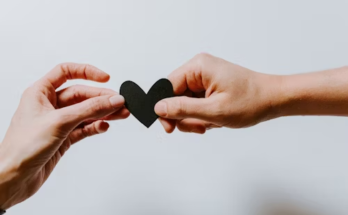Minimalism has quickly become an incredibly trendy lifestyle trend, with numerous vloggers and wellness coaches advocating its benefits. Its appeal lies in its universal application as its core principle applies to improving life regardless of background.

Essentialism takes minimalism a step further by encouraging individuals to prioritize what matters.
What is minimalism?
Minimalism involves:
- Downsizing to only what matters most.
- Keeping only what brings happiness.
- Helping focus on what matters.
It requires significant lifestyle and mindset adjustments but can lead to a more prosperous and fulfilling existence. Everyone practices minimalism in different ways and finds their own form of minimalism.
Some minimalists take a more structured approach, setting rules about what and how much to own; others strive for more conscious living by clearing away anything that no longer brings them happiness. There is no single definition for minimalism, though most agree that practicing it positively impacts mental and physical health.
Many people associate minimalism with white-walled homes filled with essential furniture and art pieces; however, numerous approaches to minimalism differ significantly. One approach involves reducing consumption in order to live more intentionally; buying only what you need while limiting unnecessary spending may also fall under this category of minimalism.
Others use minimalism to clear away clutter, stress, and distractions to become more productive. Minimalists generally focus on eliminating items that don’t serve their purpose or bring joy. Furthermore, they may strive to decrease working hours and take more frequent vacations.
Finally, minimalists often strive to reduce their carbon footprint by taking public transportation, driving hybrid cars, or living in cohousing communities explicitly designed to be eco-friendly while being socially supportive.
Critics of minimalism claim it contributes to social inequality and elitism. For example, some minimalists who follow a lifestyle approach often emphasize earning only as much as necessary to meet daily expenses; this approach can overlook the fact that they live in an economy that keeps wages low while exploiting workers.
Some minimalists have also endorsed Darwinism, which holds that humans are inherently superior to all other living organisms and nonliving matter. This type of essentialism can legitimize and reinforce existing racial, gender, or class biases.
What is essentialism?
Essentialism is a philosophy that empowers individuals to live a more purposeful and satisfying life through living by design—prioritizing those things that matter most and only committing to them. Like minimalism, but with more outstandingly disciplined commitment, essentialists only allow items that provide value or serve a purpose into their physical space. In contrast, minimalism limits items to physical spaces with value-creating purposes. Essentialists take an essentialist approach by only making commitments that help them operate at their maximum contribution level.
Essentialism, like minimalism, is both a philosophy and a lifestyle choice. By identifying and restricting non-essential items or activities from life, such as possessions, work, and relationships, essentialism can bring clarity and control by focusing on what truly matters in each aspect. A minimalist might only purchase high-quality items, while an essentialist might limit social media usage. Both can create clarity in one’s life by prioritizing what matters.
Essentialism may have some positive results, but it also often has unwanted side effects that are counterproductive, one of which is prejudice and discrimination due to essentialist beliefs that certain groups are intrinsically different, which could justify racist or xenophobic ideas and stereotypes.
Example: If someone believes that black people are intrinsically violent, they may think it’s their responsibility to rein them in and keep them under control. Such views can have far-reaching ramifications for both individuals and society as a whole.
To avoid the negative consequences of essentialism’s philosophy, you must remain conscious of its influence on your life and the treatment of others. It would help if you understood the differences between essentialism and minimalism to select one best suited to your needs; additionally, always remain aware of biases or perspectives that might hinder making the best decision for personal and professional growth.
What is the difference between the two?
Though minimalism and essentialism aim to simplify life by cutting back on clutter, their approaches differ considerably. Minimalism involves clearing away physical items from your life, while essentialism focuses on prioritizing and making decisions according to what’s most essential for you. Minimalism takes a more physical approach by clearing away physical items, while essentialism prioritizes and pursues what matters most to us all. Greg McKeown wrote the New York Times best-seller Essentialism: The Disciplined Pursuit of Less.” At the same time, it means prioritizing what matters most before moving onto essentialism’s strategic approach of prioritizing and prioritizing priorities by prioritizing and making decisions according to what matters most for ourselves individually while actively pursuing things that matter most in life and then actively pursuing those things that matter most based on personal values.
Essentialism differs from minimalism in that it requires continual practice to achieve success. Essentialism involves identifying what matters most in life and learning to say no to activities that don’t align with your essential intent, which may prove more difficult if one has become used to saying yes to everything and feels overwhelmed by their ever-expanding list of commitments.
For example, when playing sports such as golf, tennis, or baseball, there’s a wide variety of gear available that can help improve performance: special gloves and increased-fit t-shirts can all help, while for elite athletes, the essentials (one racket and ball) may suffice—and this applies in most aspects of life, too!
Another distinction between minimalism and essentialism lies in their respective approaches: minimalism emphasizes quality over quantity when it comes to values, decisions, and items; essentialism takes this further by highlighting only those aspects essential to your quality of life, so if you’re a minimalist, you might continue being minimalist even while sharing an apartment with an indoor cat or spouse; with essentialism, though, you make conscious decisions to keep only items essential to maintaining your quality of life.
The main distinction between minimalism and essentialism lies in their relative degrees of flexibility; minimalism allows more freedom than essentialism and may prove more challenging for some individuals. Transitioning from clutter-laden living to minimalism typically requires making conscious changes in your mindset, decluttering, and decluttering to become a minimalist; becoming an essentialist requires much greater intentionality with every action taken, taking longer for success to manifest.
Which approach is right for you?
Minimalism is a way of life that emphasizes eliminating physical clutter and streamlining various aspects of life. By becoming less distracted from your goals and relationships, minimalism can help increase mindfulness while decreasing stress levels and improving mental and physical well-being.
Essentialism goes one step beyond minimalism by emphasizing increasing the quality of experiences and efforts while still restricting what you do. It allows you to focus on high-value activities while still having enough energy to do so. It can be very fulfilling and satisfying.
For example, if you enjoy golf or tennis, consider cutting back on unnecessary gear to maximize performance. Instead, invest in high-quality pieces of equipment so you stand the best chance at success. Or, if hiking is your passion, invest in sturdy sneakers and an equally durable backpack to maximize enjoyment over time.
Similar to your beauty routines, when it comes to beauty products, you should choose only what works for you and makes you feel confident. For instance, Dove 0% Aluminum Deodorant Roll-On may be required to combat sweaty armpits; alternatively, if a moisturizer is necessary, Vaseline Intensive Care Deep Restore Body Lotion could provide adequate hydration.
Real-life examples of minimalism include someone who downsizes their living space by moving into a tiny house or significantly decreasing possessions in order to increase financial stability, live closer to family, or gain greater freedom.
Philosophy refers to minimalism as Occam’s Razor, an ancient principle that asserts that often, the easiest solution is usually the correct one. You can apply this concept in your daily life by removing unnecessary clutter from your homes and offices, using fewer resources for work projects, or limiting your use of social media.
Minimalism and essentialism can both provide paths toward living meaningful, rewarding lives. Finding which method best suits your unique lifestyle can be tricky, but both serve as excellent starting points.



